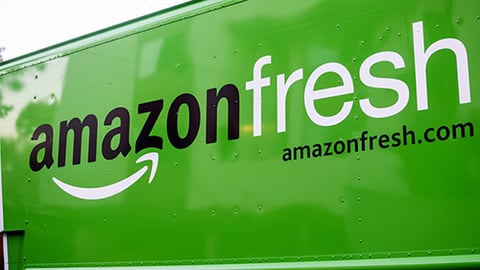Implementing a Cold-Storage Infrastructure Strategy for Ecommerce Grocery Fulfillment
In a recent report from The Food Marketing Institute (FMI), “The Digitally Engaged Food Shopper,” FMI laid out the following thought-provoking statistics regarding the habits of today’s supermarket shoppers — and what those habits might soon evolve into:
- More than 50% of grocery sales in the United States are now digitally influenced.
- Upwards of 60% of shoppers check their mobile device for sales or coupons before heading to the store.
- American consumers could spend as much as $100 billion on food-at-home shopping by 2025.
- 70% of American households will do all of their grocery shopping online within the next 10 years.
These figures indicate that a tipping point has been reached in the mindset of supermarket shoppers, and that digital shopping will become the norm in the not-too-distant future. The reasons driving this shift in attitude are all related in some way to the time savings that digital technology creates for the consumer:
- Most Americans now own a mobile device equipped with next-generation technology that that enables online shopping at the touch of a button.
- Online ordering capabilities are more user-friendly today, which equates to time savings.
- For time-crunched shoppers, buying online can be a significant source of time savings.
These challenges can only be defeated through the creation and deployment of a cold-storage program that can help ensure a reliable digital grocery-shopping experience.
Building The Best Solution
The main goal of online grocery pickup (OGP), as it is popularly known, is to make sure that an order is filled for the customer in a timely and accurate manner while not compromising food safety. The site’s cold-storage infrastructure plays a pivotal role in ensuring that all order accuracy, on-time delivery and food safety demands of the online grocery fulfillment system are met.
There's no one-size-fits-all solution to the physical infrastructure needed in an online grocery fulfillment setup, since all supermarket and grocery store footprints are unique and have their own idiosyncrasies. Therefore, the companies that create climate-controlled cold-storage solutions for various ecommerce formats understand that managing and providing different cold-storage temperature levels are the foundation for a successful OGP operation.
The companies that are best at this are the ones that possess years of experience in developing cold-storage solutions. They rely on highly trained in-house design and engineering teams that work collaboratively with their clients so that they're able to satisfy specific and unique project specifications.
The most basic OGP operation will require some form of cold storage to hold the groceries selected from the store for either customer pickup or delivery. More complex or larger OGP operations may need back-room storage coolers and freezers, assembly-line automation systems and even robotic automation that can optimize the order-filling process.
In this case, the order-storage solution may need to be suitable for use in outdoor environments that can, depending on the location, experience extreme swings in temperature and climactic conditions.
The off-site locations will also have to be fully (and reliably) automated, since there won’t be a staff member available to assist with any questions or difficulties. Again, an experienced manufacturer of cold-storage solutions will be an incredible asset when designing, installing and operating these types of fulfillment locations.
New To eCommerce?
Hand-in-hand with identifying the best strategy, equipment and configuration for the cold-storage environment, there are a number of things that grocery retailers need to consider before they make that leap into building an OGP fulfillment system:
- Without exception, cold food must be kept cold, frozen food kept frozen and fresh food kept fresh. This is critical because studies of online shopping habits indicate that 85% of online orders include produce items, 66% include meat or seafood, and 50% include fresh bakery items.
- Can you manage a surge in online orders? In other words, do you have the capacity to handle the volume if 20 orders arrive in a 15-minute window? The key to answering these questions is knowing whether the cold-storage infrastructure has sufficient capacity, or is able to fit in the confines of available store footprints. Also, is it designed to make the pickup or delivery processes as easy and seamless as possible during high-volume periods?
- The supermarket operator must also address staffing issues. Will there be staff dedicated solely to fulfilling online orders, or will on-site staff perform both online and on-site tasks as their schedules allow? Will the employees receive the proper training in operating, maintaining and troubleshooting the various components in the cold-storage infrastructure for OGP? Supermarket retailers must also be careful not to forsake the needs of their on-site shoppers while trying to optimize the online shopping experience.
The digital grocery-shopping revolution is here. With the trend toward ecommerce and OGP among grocery shoppers indicating wider acceptance, retailers must recognize the changing market conditions and be ready to take advantage of the opportunities presented. However, a successful OGP solution will only be possible if the retailer partners with a cold-storage solutions provider possessing the experience and know-how to create a cold-storage solution that not only meets the unique needs of retailers, but also the demands of their customers.








